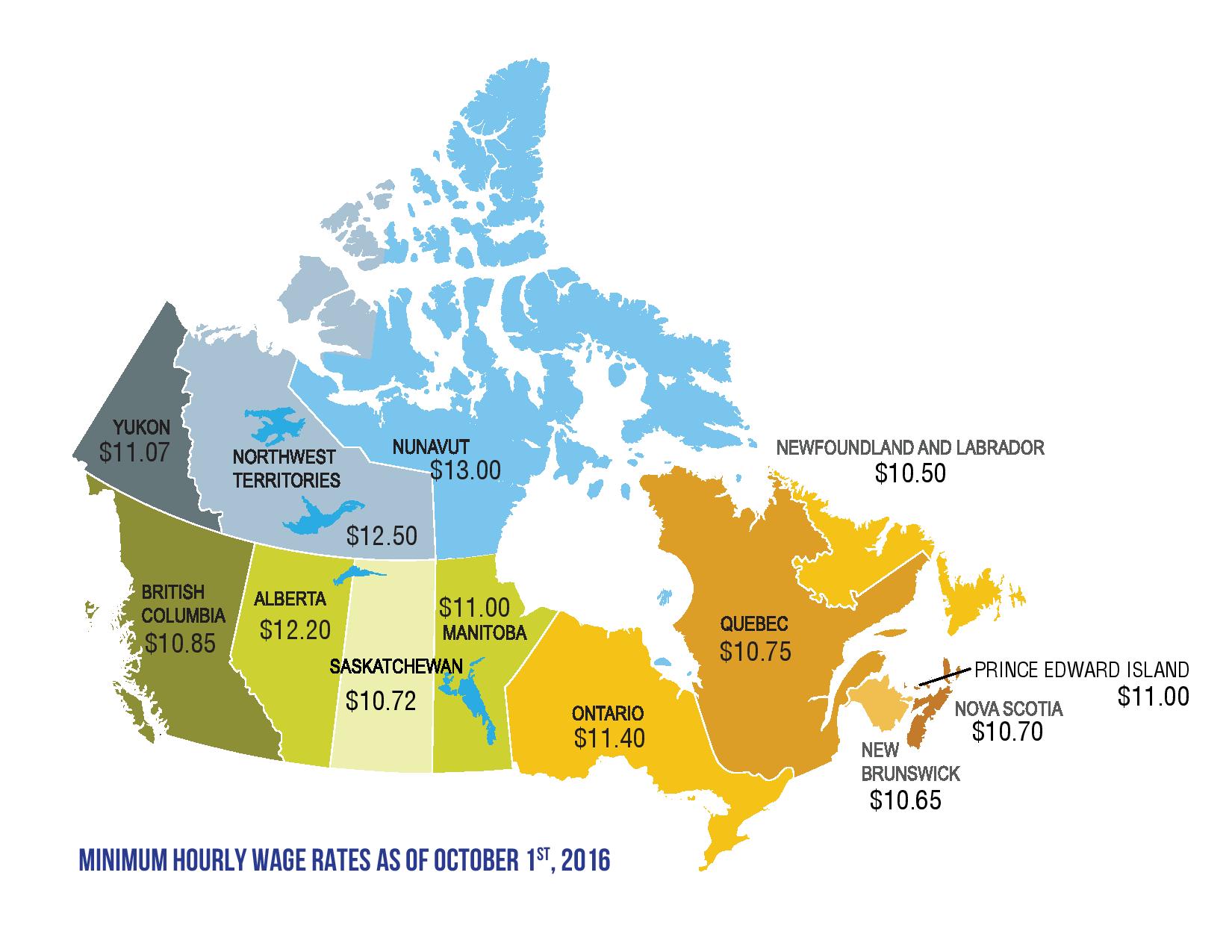Producers worry how their businesses will have to change
By Diego Flammini
Assistant Editor, North American Content
Farms.com
Ask a group of Ontario producers their main topics of conversation and the list may include weather, commodity markets, and machinery upgrades.
But since the Ontario Government announced its plans in May to increase the provincial minimum wage to $15 per hour by 2019, the potential impacts of the wage jump have become another important topic of conversation.
“That’s what’s scaring everybody, especially farmers,” Jonathan Rochon, a farmer from Edwards, Ont., near Ottawa, told CBC.
Before the minimum wage hits $15 per hour in 2019, it will increase to $14 per hour on Jan. 1, 2018.
Ontario’s minimum wage currently sits at $11.40 per hour.

Current minimum wages in Canadian provinces.
Photo: Retail Council of Canada
Rochon worries his increased labour costs could leave him in the red.
“We hire about a dozen temporary foreign workers (a year), (and) we hire 20 Canadians. Everyone falls in the (minimum wage) area here we’ll have to raise salaries across the board … it wipes out all our profits,” he told CBC.
And he isn’t the only producer calculating what a $15 per hour minimum wage could do to farm businesses.
“There’s more to it than $15 an hour,” Sarah Harrison, who operates Mazak Farms near St. Thomas, Ont., told Farms.com in July. “As an employer I don’t just pay that (wage). I have to have employment insurance, Workplace Safety and Insurance Board contributions and CPP contributions. For me, it’s more than $15.”
A producer from Simcoe County warned that increasing the minimum wage means consumers could pay more for local produce compared to imported items.
“If a quart of Ontario strawberries costs $4.00 now, it could cost $5.00 next year,” Morris Gervais, who operates Barrie Hill Farms, told Farms.com in June. “Compared to $2.00 per quart for imported strawberries, local growers are put at a disadvantage.”
The Ontario Federation of Agriculture and Ontario Fruit and Vegetable Growers Association have all expressed concerns regarding a minimum wage increase.
Jeff Leal, Ontario’s Minister of Agriculture, released a statement about the wage increase in May.